- With a history of commitment to fundamentals and quality, the International College of Broadcasting (ICB) promises to provide the best training possible in order to graduate the best broadcasting professionals and recording engineers. ICB commits to a challenging and inclusive learning culture that supports individual development in the media arts.
School Highlights
International College of Broadcasting serves 92 students (100% of students are full-time).
The college's student:teacher ratio of 5:1 is lower than the state community college average of 23:1.
Minority enrollment is 73% of the student body (majority Black), which is more than the state average of 38%.
Quick Stats (2025)
- Enrollment: 92 students
- Private-state tuition: $12,569
- Student:teacher ratio: 5:1
- Minority enrollment: 73%
- Source: Integrated Postsecondary Education Data System (IPEDS)
Top Rankings
International College of Broadcasting ranks among the top 20% of public schools in Ohio for:
Category
Attribute
Diversity
School Overview
The teacher population of 17 teachers has stayed relatively flat over five years.
International College of Broadcasting
(OH) Community College Avg.
Carnegie Classification
Associate's Colleges: High Transfer-High Traditional
Baccalaureate/Associate's Colleges: Mixed Baccalaureate/Associate's
Institution Level
At least 2 but less than 4 years
At least 2 but less than 4 years
Institution Control
Private for-profit
Private not-for-profit
Total Faculty
17 staff
93 staff
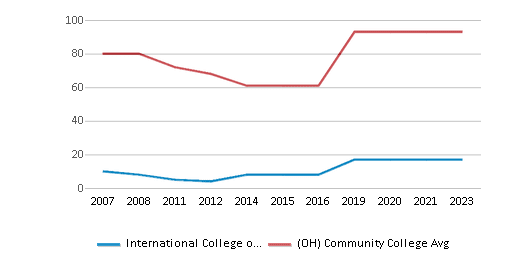
School Calendar
Student Body
The student population of International College of Broadcasting has grown by 17% over five years.
The student:teacher ratio of 5:1 has increased from 4:1 over five years.
The International College of Broadcasting diversity score of 0.79 is more than the state average of 0.58. The school's diversity has grown by 28% over five years.
Total Enrollment
92 students
533 students
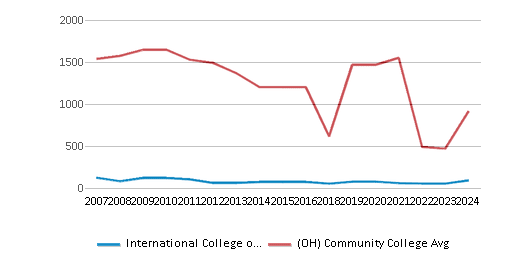
Student : Teacher Ratio
5:1
23:1
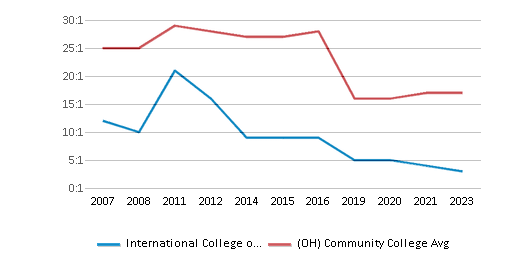
# Full-Time Students
92 students
397 students
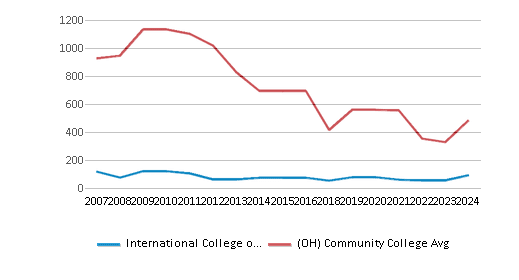
# Part-Time Students
n/a
360 students
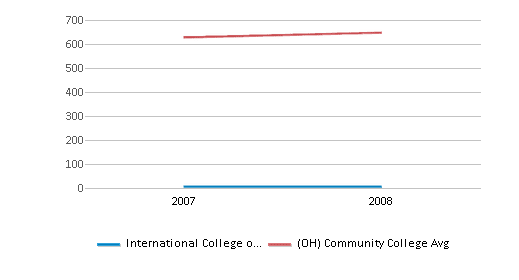
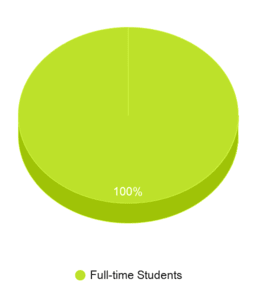

# Enrollment Undergraduate
92 students
308 students
# Full-Time Undergraduate Students
92 students
385 students
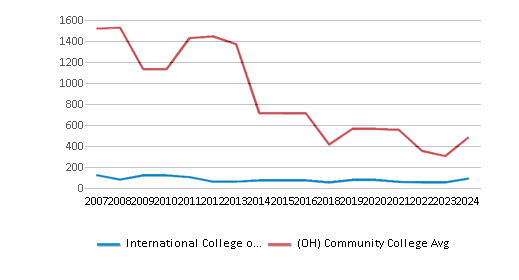
# Full-Time Graduate Students
n/a
10 students
# Part-Time Undergraduate Students
n/a
380 students
# Part-Time Graduate Students
n/a
3 students
Total Dormitory Capacity
n/a
425 students
% Asian
18%
4%
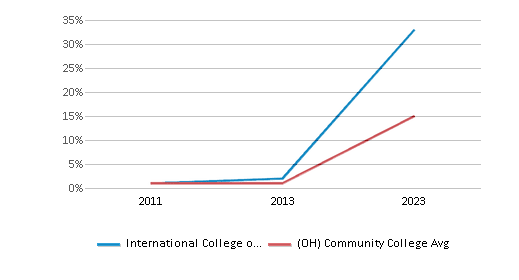
% Hispanic
1%
6%
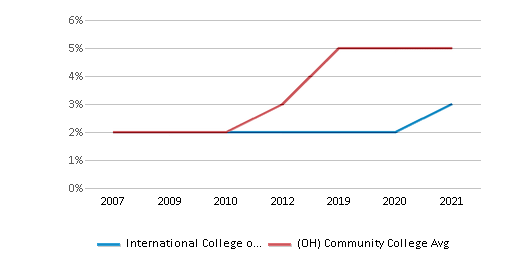
% Black
21%
15%
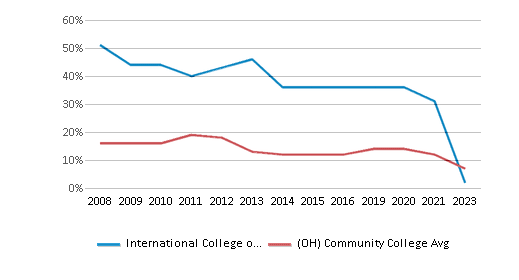
% White
27%
62%
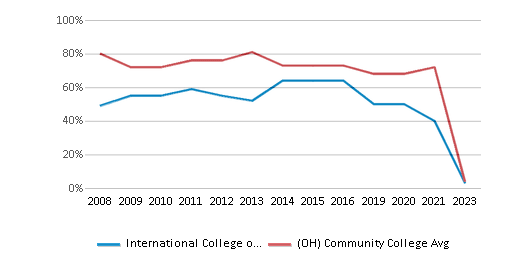
% Hawaiian
25%
2%
% Two or more races
1%
4%
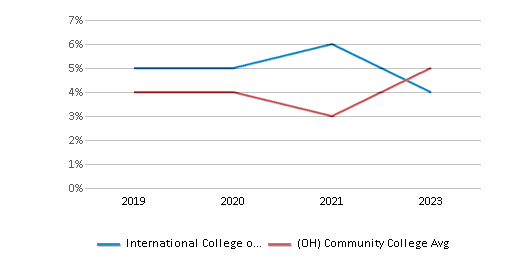
% Non Resident races
7%
1%
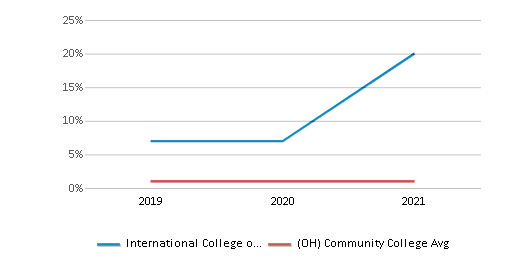
% Unknown races
n/a
6%
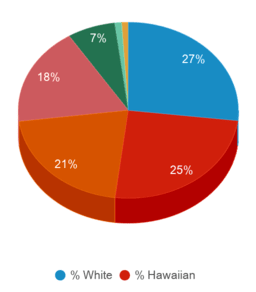
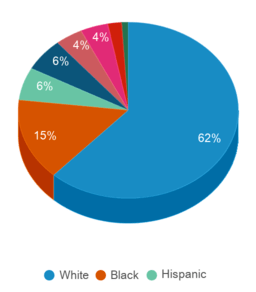
Diversity Score
0.79
0.58
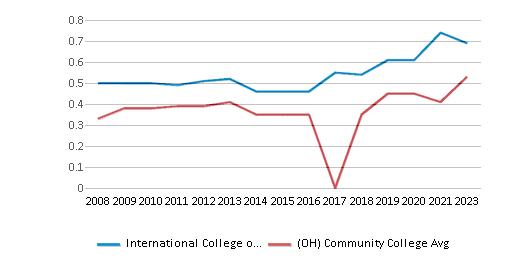
College Completion Rate (Students who graduate in less than 4 years)
0.5385%
0.5417%
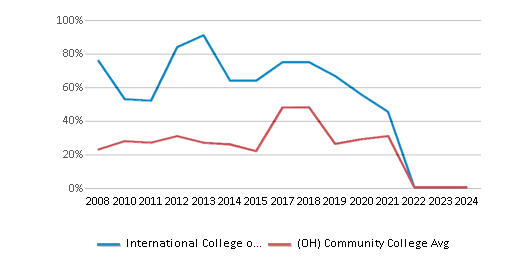
College Completion Rate (Students who graduate in 4 years or more than 4 years)
n/a
0.2197%
Average Graduate Earnings (10 Years)
$24,500
$31,900
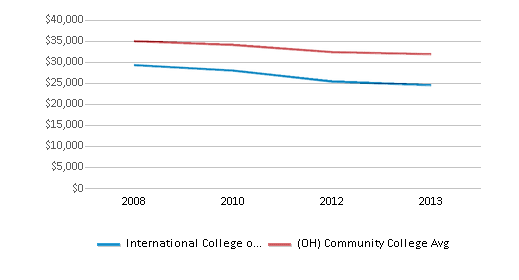
Tuition and Acceptance Rate
The private state tuition of $12,569 is less than the state average of $13,816. The private state tuition has stayed relatively flat over four years.
Private State Tuition Fees
$12,569
$13,816
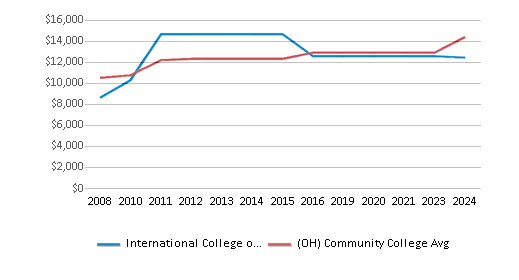
% Students Receiving Some Financial Aid
55%
88%
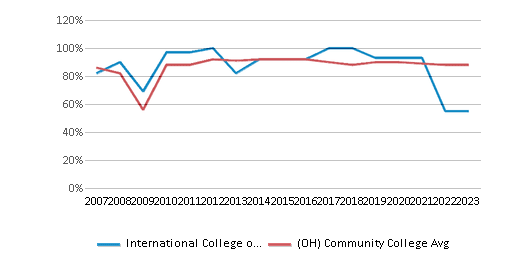
Median Debt for Graduates
$25,188
$18,500
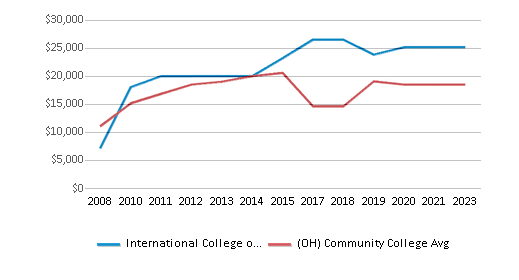
Median Debt for Dropouts
$5,908
$6,500
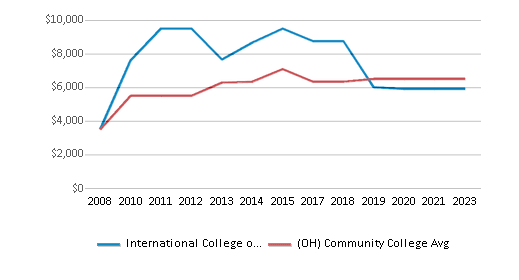
Acceptance Rate
n/a
73%
SAT Reading
n/a
460
SAT Math
n/a
475
SAT Writing
n/a
465
ACT Composite
n/a
21
ACT English
n/a
20
ACT Math
n/a
20
Source: 2024 (or latest year available) Integrated Postsecondary Education Data System (IPEDS)
School Notes
- International College of Broadcasting (ICB) was founded in 1968 and began as a trade and technical school, offering short programs in basic radio and television. The short term programs were lengthened and enhanced as technology of the industry evolved. The Associate in Communication Arts Degree was instituted to provide academic balance as well as advanced technical training. The College underwent a change of ownership in 1988, which has resulted in extensive renovation of the facility, acquisition of additional equipment, and curriculum revision. International College of Broadcasting (ICB) offers an opportunity to enter the broadcasting media with the training and expertise usually associated with experience. A Two-Year Associate Degree in Communication Arts in Television and Radio offers the combination of classroom studies with "hands-on" training in fully equipped studios, and in much more depth than usually found in even a four-year college. In March of 1992, ICB added a modern recording studio, in which classes are taught for a Diploma Program for Recording/Audio Engineering. Presently, this is one of only a few recording engineering programs being offered at an accredited college in the state. An Associate Degree in Communication Arts in Video Production/Recording Audio Engineering was instituted in November, 1994. ICB is accredited by The Accrediting Commission of Career Schools and Colleges of Technology. The college is authorized by the Ohio State Board of Proprietary School Registration to grant Associate Degrees and Diplomas.
Frequently Asked Questions
How much does International College of Broadcasting cost?
International College of Broadcasting's private state tuition is approximately $12,569.
What is International College of Broadcasting's ranking?
International College of Broadcasting ranks among the top 20% of community college in Ohio for: Diversity in US community colleges.
In what neighborhood is International College of Broadcasting located?
International College of Broadcasting is located in the Wright View neighborhood of Dayton, OH.
Recent Articles

Obtaining Your Bachelor's Degree at a Community College
Explore the evolving landscape of community colleges offering bachelor's degrees, addressing affordability, accessibility, and workforce needs.

A to Z of Community College Certificates and Courses
From business and healthcare to technology and skilled trades, the article showcases the breadth of options available to students seeking to enhance their knowledge, develop new skills, or pursue career advancement.

What is a Community College?
This comprehensive guide explains what a community college is, its history, and its role in higher education. It covers the types of programs offered, differences from four-year colleges, benefits of attending, and important considerations for prospective students, providing valuable insights for those exploring educational options.









